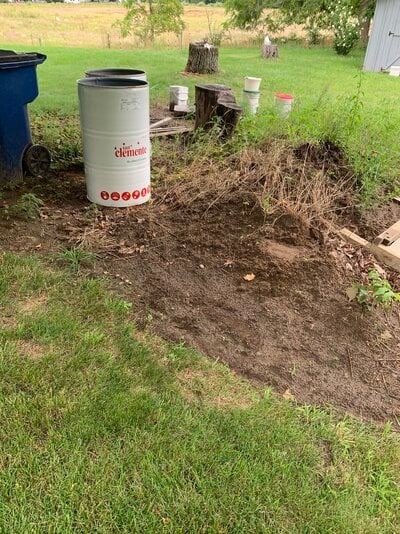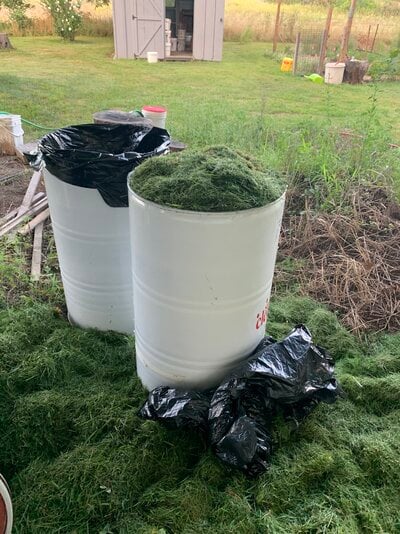I have time to try silage-making the next time we cut the lawn.
I brought home two 55-gallon steel barrels and their lids. Also, a box of 55-gallon barrel liners (basically big plastic trash bags; not the rigid kind of liner) I already had some of the optional things I've seen in descriptions of how to do it: grain, molasses, salt, and small plastic bags.
I don't have an inner lid. Until I find something better, I'm going to try sand bags as the inner lid.
The barrels are coated on the inside to hold fruit juice so I shouldn't need the liners but I can try without them if I can get this to work.
I know I need to get the moisture level of the grass right. I'm not willing to stink up the microwave to test it that way. So, I will go with the hand squeeze method and add grain or molasses to compensate for the imprecision.
I'm undecided on how many small bags to use. I don't have enough chickens to feed it fast enough to keep the edge fresh. But I'm not sure I will feed it this time anyway. I think I will just play with different size small bags and go with what turns out easiest to work with. Once I can get it to work, I can try adjusting to get it to work better.
If anyone has tried it, please share your results.
I brought home two 55-gallon steel barrels and their lids. Also, a box of 55-gallon barrel liners (basically big plastic trash bags; not the rigid kind of liner) I already had some of the optional things I've seen in descriptions of how to do it: grain, molasses, salt, and small plastic bags.
I don't have an inner lid. Until I find something better, I'm going to try sand bags as the inner lid.
The barrels are coated on the inside to hold fruit juice so I shouldn't need the liners but I can try without them if I can get this to work.
I know I need to get the moisture level of the grass right. I'm not willing to stink up the microwave to test it that way. So, I will go with the hand squeeze method and add grain or molasses to compensate for the imprecision.
I'm undecided on how many small bags to use. I don't have enough chickens to feed it fast enough to keep the edge fresh. But I'm not sure I will feed it this time anyway. I think I will just play with different size small bags and go with what turns out easiest to work with. Once I can get it to work, I can try adjusting to get it to work better.
If anyone has tried it, please share your results.






